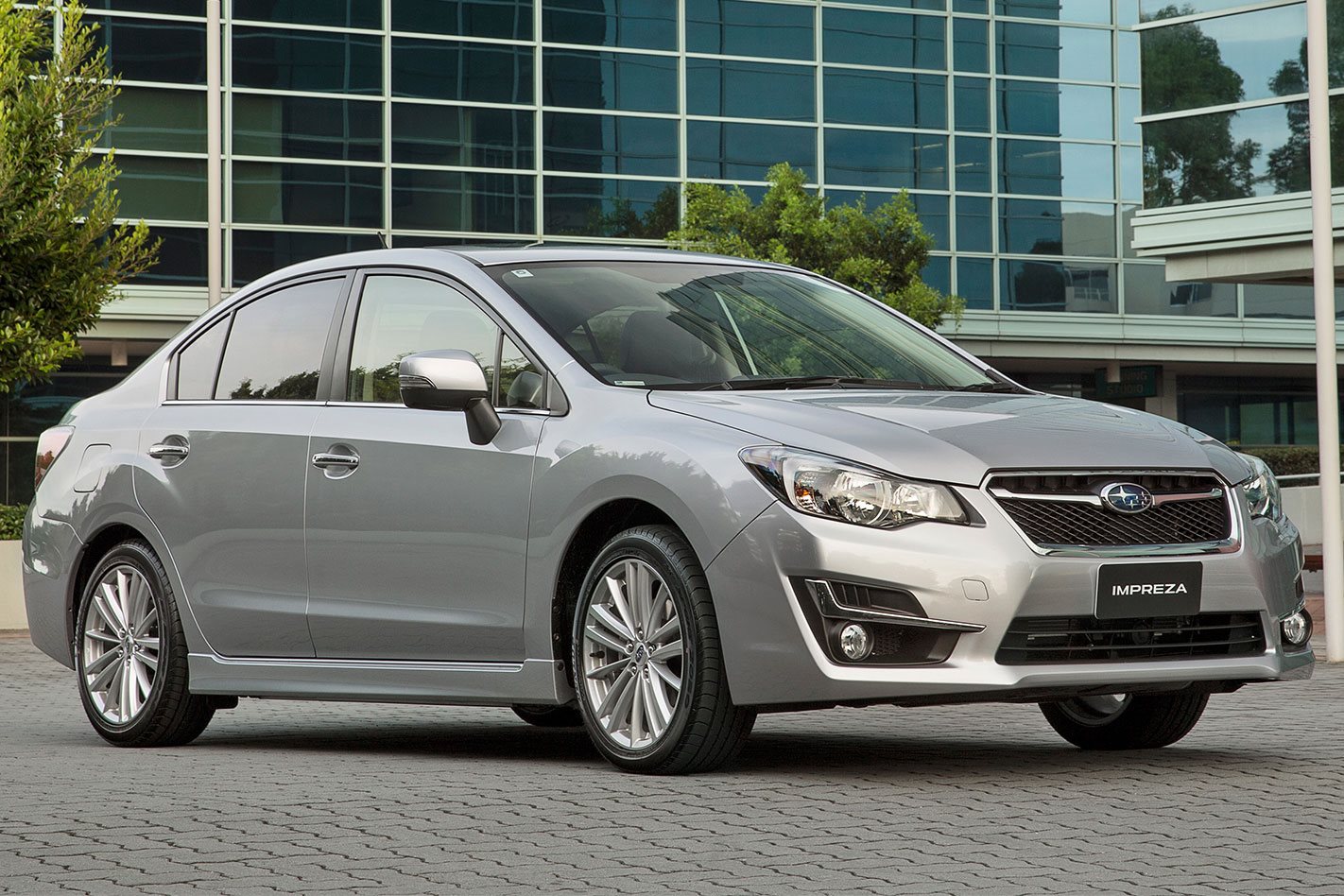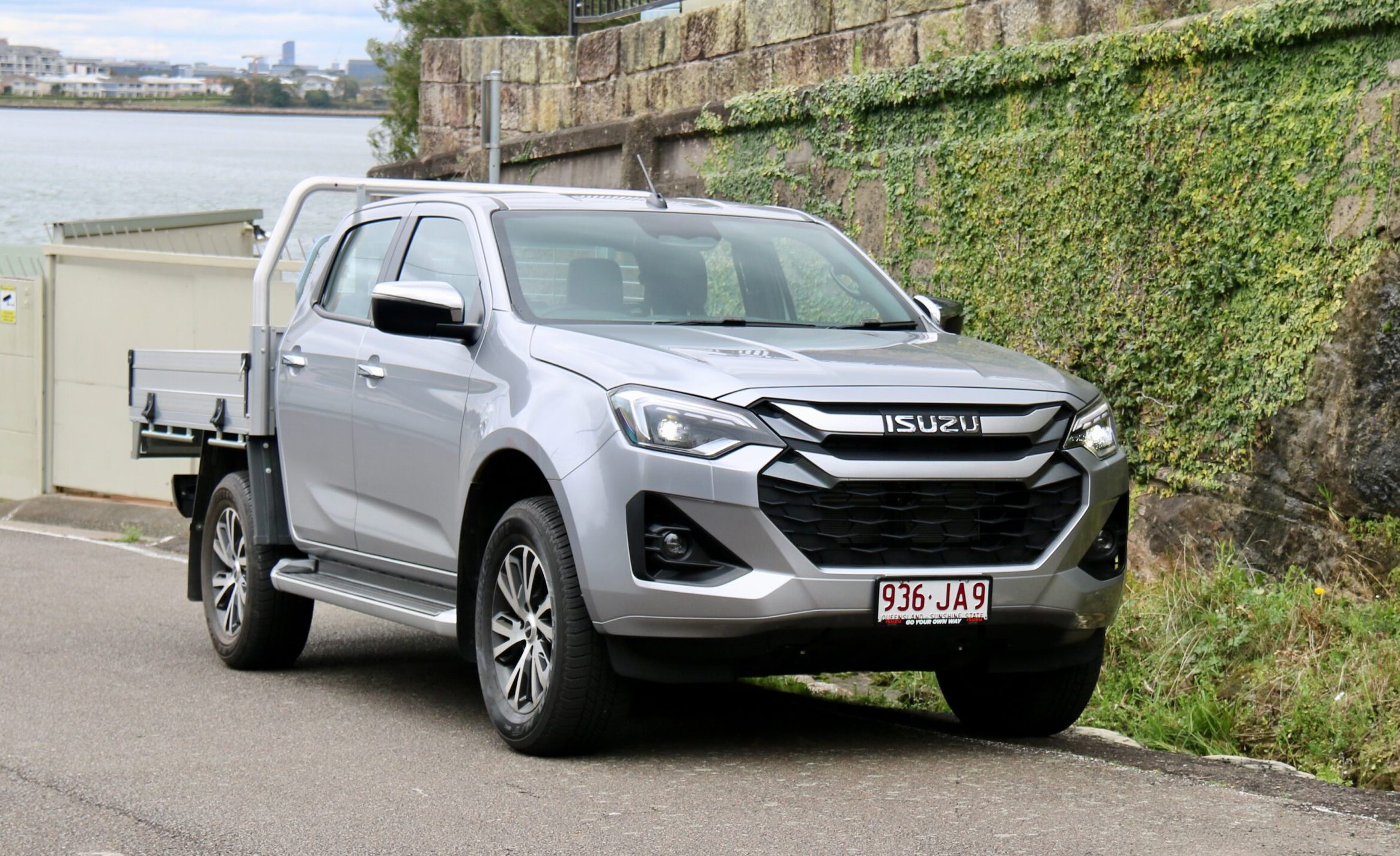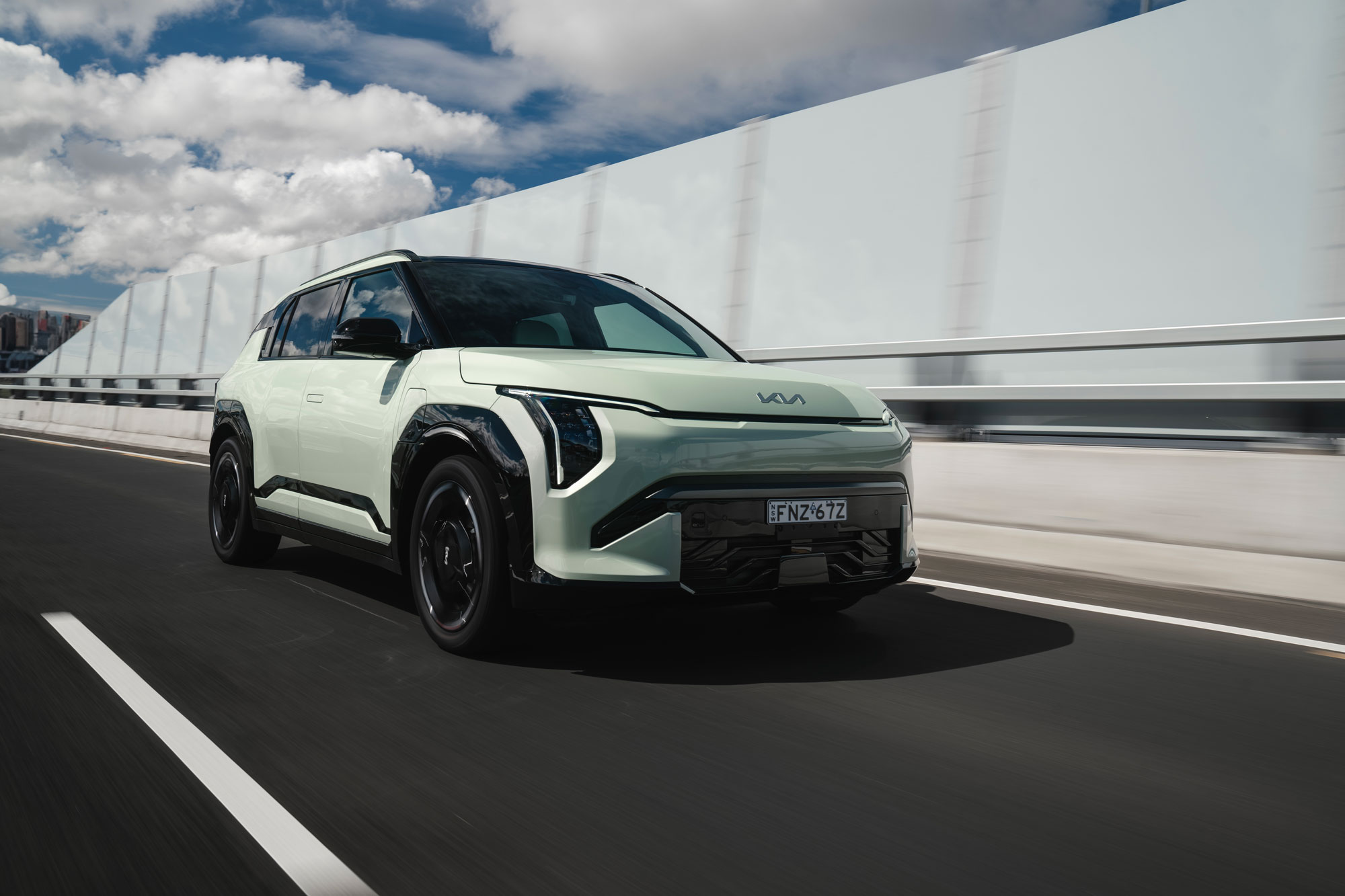
Score breakdown
Things we like
- Quiet inside
- All-wheel-drive stability
- Fuel economy
Not so much
- Slower than several alternatives
What stands out?
The Subaru Impreza feels solid for a small car, thanks to doors that thud shut and an interior that’s well built and well isolated from wind and road noise. It also drives all four wheels – which helps on slippery roads – and is packed with features. This review covers the fourth generation Impreza, sold new from 2012 to December 2016.
What might bug me?
How much slower it is than the iconic Subaru WRX, to which it is distantly related. The Impreza is among the more leisurely cars of its size.Driving under 80km/h on the space-saver spare tyre until you can fix your full-sized flat.
What body styles are there?
Five-door hatchback and four-door sedan.The Impreza drives all four wheels, and it is classed as a small car, lower priced.
What features do all versions have?
Cruise control, and climate control air-conditioning (which maintains a set temperature).Bluetooth phone and audio connectivity, with a touchscreen interface (6.2 inches on the less costly models), a voice command function, and audio controls on the steering wheel.An automatic stop/start system, which saves fuel by shutting off the engine when you stop, and restarting it when you press the accelerator to drive away.Hill-start assist, which operates the brakes automatically to make take-offs on hills easier.Headlights that turn off when the car is switched off.All-wheel-drive, which improves drive and stability on slippery surfaces.Aluminium alloy wheels (and a space-saver steel spare wheel).Seven airbags: two directly in front of the driver and front passenger; one alongside each front occupant to protect the upper body; a curtain airbag on each side covering the front and rear side-windows; and a knee protection airbag for the driver.Electronic stability control, which can help the driver to control a skidding car. All new cars must have this feature.Every Subaru Impreza carries a three-year, unlimited kilometre warranty.
Which engine uses least fuel, and why wouldn’t I choose it?
The sole engine available with the Subaru Impreza is a 2.0-litre petrol four-cylinder. When teamed with the continuously variable automatic transmission, it uses 6.8 litres/100km on the official combined cycle test.With the optional six-speed manual transmission it consumes 7.1 litres/100km, but you can make more of the engine’s modest power output.The Impreza’s engine differs from every other small-car four-cylinder in that it lies flat across the engine bay rather than standing up vertically. This places the weight of the engine lower in the car, which helps it steer more responsively.
What key features do I get if I spend more?
Stepping past the least costly 2.0i and into the 2.0i Premium brings you a reversing camera, leather trim on the seats and steering wheel, foglights, and a 4.3-inch colour multi-function display that presents helpful information.Spend more again for the 2.0i-S and the driver’s seat is power-adjustable. There is a bigger, 7.0-inch touchscreen, and satellite navigation. Dual-zone air-conditioning allows different temperatures for each side of the cabin, and the S has a powered sunroof.Other changes include side spoilers on the body, a boot lip spoiler on the sedan, and control pedals finished in aluminium with rubber grip pads, for a sporty look and feel. An increase in the wheel size, from 16 inches to 17 inches and with tyres slightly lower in profile, is also mainly a cosmetic change.
Does any upgrade have a down side?
The sunroof reduces headroom for occupants in the front.You might slide around more on the leather seats than on the more grippy cloth versions.Choosing the best-equipped version, the 2.0i-S, means you forgo a choice of transmission – it is CVT auto only.Seven metallic and pearl colours are available, and they come at no additional cost. One of those colours, Jasmine Green Metallic, is only available on the 2.0i-S.
How comfortable is it?
The Subaru Impreza is very comfortable to drive and ride in. The suspension is softer than in some similar cars, which helps it roll smoothly over bumpy roads.The Impreza is among the quietest small cars. Its cabin is well insulated from outside noises, such as the noise of the suspension working, and the sound of the tyres rolling over coarse road surfaces. The only noticeable sound at highway speeds is airstream rustle around the large, door-mounted side mirrors.The cabin is made from good plastics and textiles, which fit together well. That brings an air of quality to the driving experience that elevates the Subaru above some Japanese competitors.Supportive standard seats stay comfortable for drives of up to two hours, and the driving position is easily tailored thanks to the standard tilt and telescopic adjustable steering column. The eight-way power-adjustable driver’s seat in the 2.0i-S makes it even easier to get comfortable behind the wheel.
What about safety?
Seven airbags, a reversing camera, voice recognition, and seatbelt reminders for all five seats contribute to a safety rating of Excellent for the 2.0i Premium and 2.0i-S.The Impreza 2.0i receives the lesser rating of Very Good but the key difference here is its offering a reversing camera as an option rather than standard. Choose that option and it too would be rated Excellent.Automatic emergency braking is not offered on an Impreza.The forward location of the Impreza’s A-pillars (those either side of the windscreen) allows good vision for tight corners and roundabouts, increasing primary safety. The door-mounted exterior mirrors aid vision in the same driving conditions.The Australasian New Car Assessment Program (ANCAP) awarded the Subaru Impreza a five-star rating for safety, its maximum.
I like driving – will I enjoy this car?
Yes, you will mostly enjoy driving the Subaru Impreza, though it’s not the ideal pick for a very keen driver.The electrically assisted power steering is weighted just right, and the car turns into corners quite responsively. The Impreza’s body doesn’t lean much when cornering – the flat layout of the boxer four-cylinder is partly responsible for this quality – which adds to the feeling of good handling.However, for those who sometimes drive with enthusiasm, the Impreza becomes less impressive. Vigorous driving can upset the usually composed suspension, and expose the moderate level of cornering grip.The engine is a weak link in driver enjoyment of the Impreza. It is very smooth and quiet, and feels good in normal driving. But on hilly roads, or when asked to accelerate the car quickly, it lacks the ability to respond decisively.The continuously variable automatic transmission can be manually operated using gear-shift paddles behind the steering wheel, which makes it more fun than some conventional automatics.
How is life in the rear seats?
The Impreza’s wheelbase – the distance between its front and rear wheels – is longer than those of some small cars, which translates directly into generous leg room in the back. A comfortable, well-angled base and backrest, and good shoulder and foot room, contribute to a comfortable rear seat.The seat can carry three passengers, with lap and sash belts for all.
How is it for carrying stuff?
The Subaru Impreza sedan offers 460 litres of boot space, which is 120 litres more than the hatch has with its rear seatbacks upright. The large Holden Commodore, as a comparison, has a 495 litre boot.However, the hatchback, with its 40/60 seatbacks folded, offers 771 litres of space when loaded to the window line, or 1230 litres loaded to the roof. The sedan has a big boot, but the hatch body style is more versatile and ultimately offers greater cargo volume.
Where is it made?
The Subaru Impreza is manufactured in Japan.
What might I miss that similar cars have?
Turbocharged small cars such as the Volkswagen Golf respond more eagerly to the accelerator pedal, particularly from low speeds.Some small cars, among them the Golf and the Mazda3, offer low-speed automatic emergency braking on most models, at least as an option. A sensor detects obstacles in front of the car – typically another car that has slowed suddenly – and a computer applies the brakes if it concludes that a collision is imminent.The Renault Megane and Hyundai Elantra and i30 offer five-year warranties, and the Kia Cerato is warrantied for seven years.Another small car worth considering is the Honda Civic.
I like this car, but I can’t choose which version. Can you help?
Absolutely – the Subaru Impreza 2.0i Premium hatch is our pick of the line-up, for the reversing camera and leather trim.
When did Subaru update this Impreza?
The fourth-generation Impreza arrived in Australia in early 2012. There was a facelift about May 2015, which introduced the 2.0-i Premium model, revised the grille and headlamps, and brought new touchscreen interfaces and minor changes to the interior trim.An all-new, fifth-generation Impreza arrived in December 2016 for the 2017 model year. It brought better steering and cornering, better economy and a little more power from direct petrol injection, a bigger and much nicer cabin, and automatic braking via Subaru’s EyeSight system.
Score breakdown
Things we like
- Quiet inside
- All-wheel-drive stability
- Fuel economy
Not so much
- Slower than several alternatives



